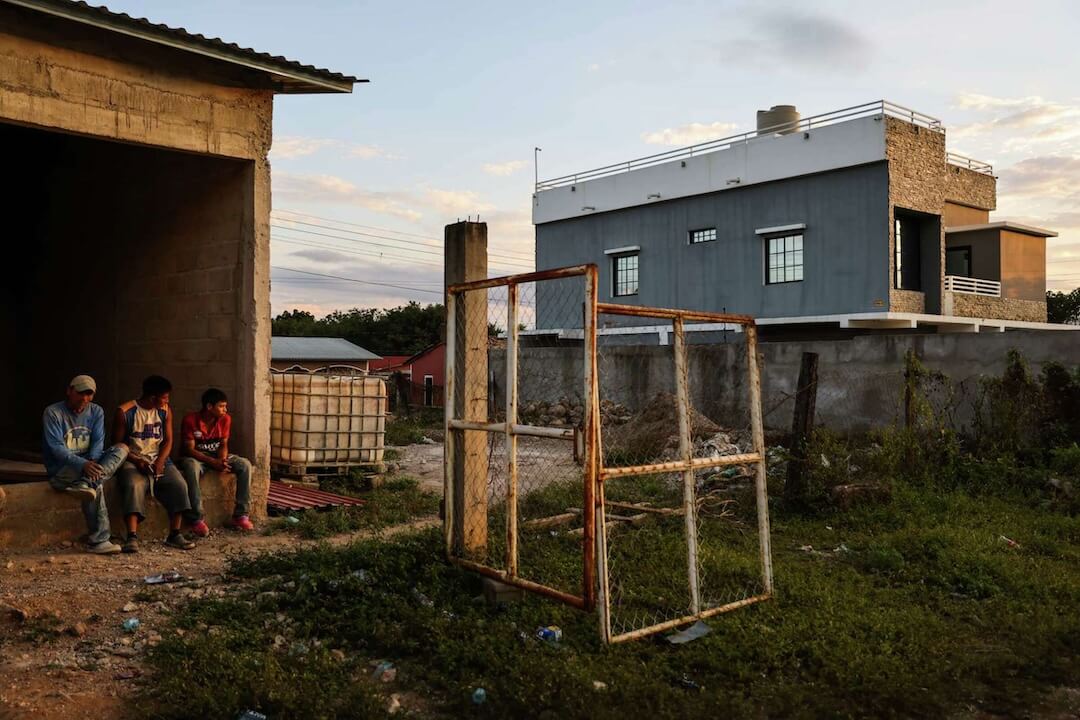When people have been traumatized, they’re often reluctant to talk to the media. There are ways of getting them to open up, though, and of showing them the value in sharing their story.
I talked with five journalists who have interviewed sexual assault victims, people with mental illnesses and parents who have lost children. Here are 10 tips from them.
Give sources a reason to share their story.
Letting sources know that you want to hear their voice and their side of the story can be invaluable.
“Explain to them how that this is their opportunity to have their loved one be more than a statistic — more than another victim of a drunk driver or an abusive parent or gun violence,” said Joyce Garbaciak, contributing news correspondent for WISN-TV. “This is their chance to let viewers know why the loss of their loved one will be noticed and felt by the community at large.”
Garbaciak has done several tough interviews with sources suffering from loss and the aftermath of horrible accidents and crimes.
A big part of making people feel comfortable, she said via email, is being as compassionate and as straightforward as possible: “People who’ve gone through such a loss are vulnerable. They need to feel that you as a reporter are not out to take advantage of them. I think they appreciate honesty.”
Write a letter.
Some sources who won’t respond to emails, phone calls or knocks at the door will respond to letters. Dallas Morning News reporter Christina Rosales sent letters to sources while writing for the Medill Innocence Project, which looks into criminal cases that are thought to have involved miscarriages of justice.
“We would ring the doorbell and have a note ready, but they would slam the door in our face,” she said by phone. “We would leave a note out there, though … Generally after reading it, people would see I didn’t want to bring back bad memories, and that I just wanted to help.”
In the note, she would explain why she wanted to talk and what the story was going to be about. Sometimes, sources who wouldn’t otherwise talk to her, responded. Rosales, who has also sent letters to sources while reporting stories for the Morning News, admits that this isn’t the best approach when you’re on a tight deadline. But if you have the luxury of time, she said, it can work.
Slow down & be patient.
As journalists, we’re used to working quickly. But sometimes it works to our advantage to slow down. Lauren Wolfe, director of the Women’s Media Center‘s Women Under Siege project, regularly interviews people who have been sexually assaulted. She’s found that it can take a while to gain her sources’ trust, so she tries to be patient.
“I’ve had sources speak very slowly sometimes, and the less you push, the more you can often end up learning. … You may find that a source has more to say than you expected if you give them the time to speak,” Wolfe said. “Sitting back and listening can be the best thing you can do in these interviews. Not rushing. Showing that you hear them.”
Andrew Meacham, who writes about the deceased for Poynter’s Tampa Bay Times, makes it a point not to rush people he’s interviewing.
“Sometimes people seem a little weepy or confused, or they’ll apologize for not being able to recall something,” Meacham said. “For me, the thing that works best is just to say, ‘Take your time.’ Just that one phrase. It seems to relax them a little bit.”
Help sources get used to the camera.
Some sources feel uncomfortable talking — and showing their emotions — on camera.
Garbaciak typically tells sources that the camera is simply her “means of storytelling.” She has conversations ahead of time with the videographer/photojournalist she’s working with so they can figure out how to make the interview go as smoothly as possible.
“When [I] meet the interview subject, the photojournalist begins to set up and I can take some time just speaking with the person and getting them comfortable with you. The photojournalist then knows to just to keep rolling and not to declare, ‘OK — we’re all set,’” Garbaciak said. “I don’t want to signal to the subject that now is the time to tense up. I just want to keep the conversation going.”
Some sources, she said, have told her they were so engrossed in the interview that they had forgotten they were on camera.
Acknowledge their vulnerabilities.
Wolfe has found that it helps to be sensitive to sources’ vulnerabilities. When interviewing people who have been sexually abused, she generally starts off by letting them know how she found out about their story.
“I imagine it’s got to be jarring for a reporter to suddenly ask about something so personal,” Wolfe said. She’s also clear about the goal of the story and asks them some initial questions to gauge their comfort level.
“How do they feel about having it told publicly? We discuss the point of the story overall — is it to potentially bring justice in a particular case? To allow for survivors to tell their sides? To shed light on an under-reported kind of assault in a particular place?”
Wolfe also lets sex abuse survivors determine how much of their story they want shared.
“The most important thing, to me, when reporting on sexualized violence, is to give the survivor basic control of what you present about their case to the world,” she said. “This goes against what we’re all taught in journalism, but in this case, I’d rather not hurt or traumatize someone who has already been through hell.”
Separate yourself from the pack.
Shoshana Walter, crime and punishment reporter for the Bay Citizen and the Center for Investigative Reporting, recently covered the shooting of a 1-year-old in Oakland, Calif. After the shooting, a group of journalists stood outside the hospital day and night. They wanted to talk with the father, who had been holding the baby during a rap music video shoot when the incident occurred.
“I did everything I could to reach people close to him,” Walter said via email. “I tweeted, emailed and Facebook messaged all of his friends.”
She eventually reached out to a local pastor who had joined the family at the hospital to pray for the child. She told him about the story she wanted to write and why it was important to include the father’s voice in it. After realizing she had good intentions, the pastor talked with the father and vouched for Walter. Soon after, the father agreed to talk.
“Suddenly, he could see me as separate from the pack,” Walter said. “For many victims, the pack of reporters can be just as traumatizing as the event itself.”
Find something that resonates with sources.
WISN’s Garbaciak once wrote a piece about a teenage girl who was killed after her car slipped under a cable median barrier. The girls’ parents wouldn’t talk, so Garbaciak wrote them a letter letting them know that along with finding out more about their daughter, she wanted to report on the effectiveness of cable median barriers.
After talking with someone who knew the dad, she learned that he had strong feelings about the issue and thought he might be willing to talk about it.
“Once I told him that personalizing the issue would likely resonate with both viewers and officials who had the power to change things, he agreed to talk with me,” said Garbaciak, who had reached out to him several times. “I ended up doing several stories because what he and his wife said were so powerful.”
Ask sources to tell you about their ambitions.
When interviewing people who have suffered from mental illnesses, Rosales almost always asks them what their ambitions are.
“They usually say, ‘I’m glad you asked that,’ ” she said. “They get past all of the horrible stuff and tell you what they really want in life.”
When posing this question to a woman who was imprisoned, the woman replied: “I want freedom. I want grass, the kind you can lay on. I just want to lay in the grass with my kids, y’all.”
“That was one of the golden quotes in the story,” Rosales said.
She’s found that it’s important to pay attention to what people want to talk about. It’s one way, she said, of getting them to open up and finding out something about them that you wouldn’t have otherwise known.
Abstain from judgment.
This is especially important with cases involving sexual assault survivors, Wolfe said.
“I do try to be sensitive to the fact that someone may have chosen not to pursue legal action or even report a case to the police,” she said. ”It’s important to realize that that doesn’t mean their story isn’t true — it can mean they are frightened of either the consequences of reporting or having their personal story told to the world.”
It makes more sense to figure out why a source isn’t sharing a story than it does to assume that the person is lying, Wolfe said.
“Are they afraid of being shunned by their own family? Bribed or re-raped by police? Many war-torn societies have laws that implicate women in their own rapes or no laws at all to protect them. Are they ashamed of what happened to them? Leaving judgment out of the interview can help you get to the root of this.”
Let sources know that their story could ultimately help others.
Garbaciak recently interviewed a woman whose parents had abused her as a child and kept her in a dog cage until she was rescued at age 7. Garbaciak sought her out because something similar had happened to another local girl and Garbaciak wanted to know how she had dealt with that experience and moved on.
The woman, Garbaciak said, was initially reluctant to do the interview because she didn’t see what good it would do, and she didn’t want to jeopardize her own psychological recovery.
“But I told her that what she went on to accomplish — she’s a successful college student, a mother, an employee — is the hope that this story needed,” Garbaciak said. “How did she do it? Where did she turn for help? Maybe there were lessons in her recovery that the current victim could use. Only when I pointed out that the current victim could benefit, did she agree to speak with me.”








Comments